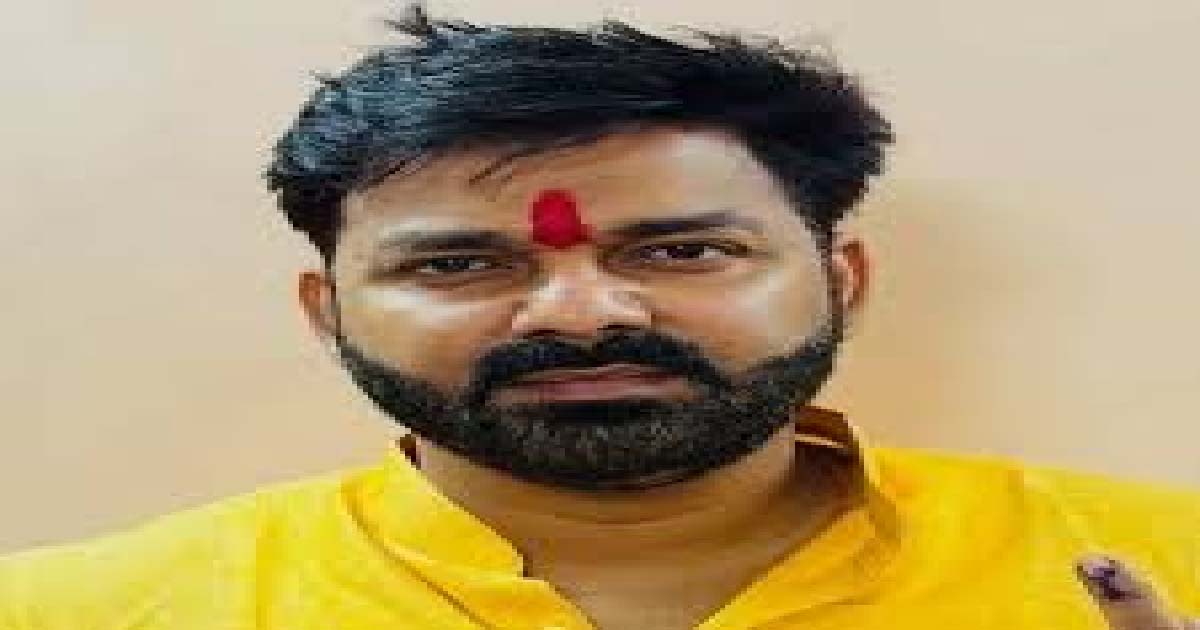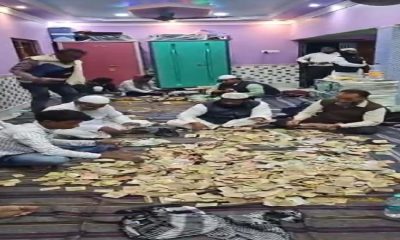General
BMC’s Commitment to a Secure Mumbai

Mumbai, known as the financial capital of India, the provenance of the Bollywood, and a hub of aspirations for millions of Indians, has emerged as a distinctive metropolis. Its exceptional features are the result of well-planned infrastructure in terms of basic amenities, industries, transportation, healthcare, education, tourism, and more. Amidst this diversity, Mumbai’s geographical composition is also uniquely remarkable. Surrounded by the sea on two sides and a creek on another side, this metropolis has witnessed challenges throughout its history. Apart from providing civic services and amenities, the parent organisation of Mumbai, the Brihanmumbai Municipal Corporation (BMC) also takes on the significant responsibility of formulating contingency plans for natural and man-made crises and managing such situations too.
BMC has always prepared to address various disasters and crises that may arise, to ensure the safety and well-being of the citizens of Mumbai. While continuously striving to provide excellent basic amenities for the residents of Mumbai, BMC takes proactive measures to plan appropriate solutions in challenging circumstances. A vital component of this proactive approach is the Disaster Management Department of BMC. Mumbai has faced numerous challenges in the past, such as heavy rainfall, floods, landslides, terrorist attacks, building collapses, fire incidents, and other disasters. The catastrophic flood in 2005 and the terrorist attack in 2008 are the major crises that have occurred in Mumbai until now. In both these crises, the well-organized and planned disaster management mechanism implemented by BMC played a crucial role in mitigating the situation and bringing Mumbai back to normalcy within the shortest possible time.
However, despite such achievements, the need for coordination, well-equipped infrastructure, and skilled manpower in all areas of disaster management has been brought to the fore by these two incidents. Hence, the journey of the BMC’s Disaster Management Department has now reached a phase where it is embracing artificial intelligence, machine learning, and other forms of advanced knowledge to enhance its preparedness. This transformative journey aims to augment human intelligence and expertise with technological advancements, thereby ensuring a multi-pronged and experiential approach to crisis management.
In 1993, Maharashtra witnessed a devastating earthquake centered in the Killari region of Latur district. As a result, the Government of Maharashtra decided to establish disaster control rooms in each district and municipal corporation to coordinate and facilitate effective communication among the administration during times of disasters. In 1999, BMC established a disaster management control room in the basement of its expanded headquarters building. Initially, this control room had limited manpower and resources but served the purpose of communication and coordination during emergencies. At that time, there was not much awareness or development of scientific perspectives for identifying potential threats. In such circumstances, BMC began work on disaster management measures.
Furthermore, in 2005, Mumbai faced a catastrophic flood due to unprecedented rainfall. This unexpected celestial crisis brought Mumbai to a standstill. However, BMC and the Disaster Management Department made relentless efforts with all available resources and played a crucial role in restoring normalcy to the lives of Mumbai’s residents within 48 hours. Despite being confined to a small area of about 500 square feet, the Disaster Management Department efficiently coordinated with various agencies and carried out its tasks with utmost dedication.
However, this incident highlighted the need to further strengthen the preparedness of the Disaster Management Department.
Under BMC, the expansion of the Disaster Management Department took place in 2006. Accordingly, the manpower in the Emergency Operation Center (EOC) was increased and they were given the latest training. In 2016, with the aim of making this department more effective, the number of hotlines was increased, and the Maharashtra government provided over 5,000 CCTV cameras under the Mumbai Surveillance Project for direct deployment to enhance video surveillance capability.
Additionally, various state-of-the-art equipment were made available. In 2008, BMC began utilizing IT resources to deal with incidents such as terrorist attacks, bomb blasts, landslides, fires, and building collapses that pose a threat to public safety. Through the use of information technology, the foundation of essential information databases for prohibition, mitigation, and preparedness was established. Geographic Information Systems (GIS) became the basis for this information system.
GIS made possible the availability of information on various tools, resources, and manpower for handling disasters that occur in specific locations. As a result, it became possible to make effective decisions, plan measures, and implement them during emergencies.
Considering past incidents and potential future crises, the decision has now been made to use Artificial Intelligence (AI) to manage disasters. Through this medium, the city of Mumbai will be able to plan disaster management based on an assessment of various potential threats. The estimation of various disasters will be done in advance through AI and machine learning. The analysis of these estimates using scientific methods will allow timely decision-making and reduce the risk of potential disasters.
To manage various disasters and implement preparedness and mitigation plans, the municipal corporation plays a coordinating role as the nodal agency under the Disaster Management Act 2005. A systematic approach has been adopted to ensure a reliable methodology, making it easier to engage with all related systems. Focus is not only on the systems. Public awareness, training, and public participation have also been given due attention by the municipal corporation. Initiatives have been continuously undertaken to educate citizens and students about disasters. In this regard, under BMC, the City Disaster Management Training Center has been established in Parel. This four-story building houses a 150-capacity 3D theater, training rooms, state-of-the-art simulation facilities, and other amenities.
Currently, several important development projects such as the Coastal Road, are underway in Mumbai, focusing on essential infrastructure. These projects aim to ensure sustainable development and minimize potential risks by adhering to all regulations of the Indian Standard 1893 about earthquake resistant structures.
The city of Mumbai is expanding not only horizontally but also vertically. Therefore, fire safety measures, including the installation of fire suppression systems, have been made mandatory in tall buildings to prevent incidents such as loss of life and financial damage. Additionally, every six months, each building must undergo a fire safety inspection and the self-declaration must be submitted on the BMC portal. To enforce these measures, all buildings are required to comply with the Maharashtra Fire Prevention and Life Safety Measures Act of 2009.
Considering the heavy monsoon rain and high tide situations there is a need for proper planning to address the issue. Consequently, initiatives have been taken to drain flood water and implement solutions based on geographical considerations. BMC is always prepared for such situations.
BMC has taken initiatives to rejuvenate all rivers flowing in Mumbai. Protection walls have been constructed to ensure the safety of citizens residing along the banks of rivers and nallas. Regular maintenance of these water bodies are carried out to maintain cleanliness by removing silt, garbage, and waste. In certain areas, underground water storage tanks have been built to increase the capacity of storing water, allowing the collection of millions of liters of flood water. Pumping stations have been built in different parts of Mumbai to facilitate quick drainage of excess rainwater into the sea.
In terms of disaster management, BMC has implemented various measures to ensure preparedness. Regardless of the severity of any emergency situation, our duty is to safeguard the lives and financial well-being of the residents of Mumbai. I take great pride in the fact that BMC is always ready to fulfill this responsibility, even in times of crisis.
Maharashtra
Sakri Holi riots: Dhule sessions court acquits ten Muslims including two women in the case, Jamiat Ulema Maharashtra takes legal action against Arshad Madani

Dhule Sessions Court Additional Sessions Judge Jayshree R. Platte acquitted ten accused, including two women, in the Holi riot case that took place at a place called Sakri near Dhule recently due to the complainant and other government witnesses’ deviation from their previous statements. The court acquitted accused Sumiya Zakir Sheikh, Shabana Farooq Sheikh, Meraj Ibrahim Syed, Nasir Sapro Sheikh, Irfan Sapro Sheikh, Mohiuddin Sheikh, Nisar Naseeb Khan Pathan, Samad Saleem Sheikh, Zakir Sapro Sheikh and Saleem Sheikh of serious charges like attempt to murder. The case of the accused was pursued by the Jamiat Ulema Maharashtra (Arshad Madani) Legal Aid Committee on the request of Jamiat Ulema Dhule. Advocate Ashfaq Sheikh appeared in defense of the accused while Advocate NB Kalal followed the prosecution. On March 18, 2022, communal riots broke out in Sakri on the occasion of Holi, after which the police took unilateral action and registered a case against ten Muslims, including two women, under sections 147, 148, 307, 353, 332, 336, 337, 295 of the Indian Penal Code. The police applied Section 4/25 of the Arms Act on the accused and accused them of assault with weapons. Initially, the case was heard in the Sakri Magistrate Court and then the case was transferred to the Dhule Sessions Court because the police had also applied serious sections like 307/ along with the Arms Act on the accused. During the final hearing, Advocate Ashfaq Sheikh told the court that during the trial, the complainant and his wife did not support the police and deviated from their previous statements. Therefore, the accused should be acquitted from the case.
Additional Sessions Judge Jayshree R. Plate of the Dhule Sessions Court said in his decision that the accused cannot be punished on the basis of deviation from the statements of important witnesses and mere suspicion, therefore all the accused are acquitted from the case. On the instructions of President Jamiat Ulema Maharashtra Maulana Haleemullah Qasmi, Mushtaq Sufi (General Secretary, Dhule District) and his colleagues prosecuted the case.
Maharashtra
Bhojpuri actor Pawan Singh faces threat, complaint filed in Crime Branch after Lawrence Bishnoi’s threat

Mumbai: Bhojpuri actor Pawan Singh has been threatened by the Lawrence Bishnoi gang not to join Bigg Boss and not to work with Salman Khan, after which Pawan Singh has filed a complaint with the Anti-Money Laundering Squad of the Mumbai Crime Branch here. The police have also started an investigation into Pawan Singh’s case. The Bhojpuri actor received a phone call in which he was threatened with bad consequences including not joining Salman Khan’s Bigg Boss and not working with him. At the same time, the addressee has said that he belongs to the Lawrence Bishnoi gang. The police have started an investigation in this matter and it is being found out who is the threatening caller and whether he really belongs to the Lawrence Bishnoi gang or is he trying to scare the film industry in the name of Lawrence Bishnoi. Earlier, the Lawrence Bishnoi gang also threatened actor Kapil Sharma not to do a film with Salman Khan and not to invite him to host their program, after which the Mumbai police have arrested Kapil Sharma. Security had also been increased. Now again, Lawrence Bishnoi gang has threatened the Bhojpuri actor with dire consequences. Despite the threat, the Bhojpuri actor has decided to participate in Bigg Boss with Salman Khan, after which his security has been increased. The Mumbai Crime Branch is investigating the matter to see if Lawrence Bishnoi himself gave this threat or not. Efforts have also been made to trace the threat along with its recording.
Mumbai Press Exclusive News
On the 33rd anniversary of the Babri Masjid demolition, Mumbai’s streets reverberated with chants of “Allahu Akbar.”Peaceful protests and prayers for recovery were offered, with police on alert.

On the 33rd anniversary of the Babri Masjid demolition in Mumbai, mosques, streets, and intersections in the city and suburbs echoed with the call to prayer of Allahu Akbar, Allahu Akbar, when the miscreants had demolished the Babri Masjid at 3:45 pm. Muslims believe that the Babri Masjid is a mosque from the throne to the floor and will remain a mosque until the Day of Judgment. Therefore, Muslims observed a black day of protest on December 6. Prayers were also offered for the recovery of the Babri Masjid on this occasion. Raza Academy had announced to observe a black day on the martyrdom of the Babri Masjid and to give collective azans in mosques. On this occasion, Raza Academy organized azan at the intersections of Muslim-majority areas, especially Minaret Masjid and other mosques. On this occasion, the police had made strict security arrangements. Muslim organizations also observed a black day by giving azan and protesting on the martyrdom of the Babri Masjid. Muslims also remembered the grief of the martyrdom of the Babri Masjid by posting statuses related to the Babri Masjid on social media and every Muslim looked sad.
33rd anniversary of the Babri Masjid demolition; Azans were given in the city on the appeal of Raza Academy. On the occasion of the 33rd anniversary of the Babri Masjid demolition, Raza Academy gave azan in different areas of the city at 3:45 pm. The aim of this initiative is to keep the memory of this historical event fresh and pay tribute to the martyrs of Babri Masjid. Raza Academy gave azan in particular at Khatri Masjid, Bunyan Road, Minare Masjid, Muhammad Ali Road Corner, Bhandi Bazaar, Neer Mandvi Post Office. On this occasion, scholars prayed for the recovery of Babri Masjid and made it clear that Babri Masjid was taken by fraud. Babri Masjid will remain a mosque until the Day of Judgment. The miscreants have tarnished the constitution of the country by demolishing this mosque, which will always remain a fresh wound like injustice. Raza Academy head Saeed Noori said that Black Day is observed on the martyrdom of Babri Masjid. On this day, Raza Academy organizes Azan and peaceful protests are held against this injustice. He said that miscreants targeted the mosque and martyred it while it was protected, but even today its perpetrators are free. The Supreme Court has also accepted that Babri Masjid was not built by demolishing a temple, while miscreants have put a stigma of oppression and injustice on the chest of the country. Every year on the anniversary of Babri Masjid, Raza Academy refreshes its memory by giving Azan. There is a sorrow that will always remain. Mumbai Police had made strict security arrangements on the anniversary of Babri Masjid and an alert was issued in the city.
-

 Crime3 years ago
Crime3 years agoClass 10 student jumps to death in Jaipur
-

 Maharashtra1 year ago
Maharashtra1 year agoMumbai Local Train Update: Central Railway’s New Timetable Comes Into Effect; Check Full List Of Revised Timings & Stations
-

 Maharashtra1 year ago
Maharashtra1 year agoMumbai To Go Toll-Free Tonight! Maharashtra Govt Announces Complete Toll Waiver For Light Motor Vehicles At All 5 Entry Points Of City
-

 Maharashtra1 year ago
Maharashtra1 year agoFalse photo of Imtiaz Jaleel’s rally, exposing the fooling conspiracy
-

 National News1 year ago
National News1 year agoMinistry of Railways rolls out Special Drive 4.0 with focus on digitisation, cleanliness, inclusiveness and grievance redressal
-

 Maharashtra1 year ago
Maharashtra1 year agoMaharashtra Elections 2024: Mumbai Metro & BEST Services Extended Till Midnight On Voting Day
-

 National News1 year ago
National News1 year agoJ&K: 4 Jawans Killed, 28 Injured After Bus Carrying BSF Personnel For Poll Duty Falls Into Gorge In Budgam; Terrifying Visuals Surface
-

 Crime1 year ago
Crime1 year agoBaba Siddique Murder: Mumbai Police Unable To Get Lawrence Bishnoi Custody Due To Home Ministry Order, Says Report






















